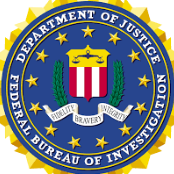Fact-Checking the Political Attacks on Tim Walz: Unpacking the Myths and Misrepresentations
-
Recently Browsing 0 members
- No registered users viewing this page.
-
Topics
-
-
Popular Contributors
-
-
Latest posts...
-
13
UK Macron Blames Brexit for Channel Migrant Surge as UK-French Deal Faces Turmoil
So did Macron in the OP He was wrong, and I pointed why he was wrong. Do you wish to refute any of the points that I made, saying Macron was wrong ? Now is your chance to show us your intellectual superiority or show us your mentalism. Up to you, as some say in Thailand. -
0
Myanmar Junta Chief Praises Trump in Bid to Lift Sanctions
CINCDS Myanmar’s military ruler Min Aung Hlaing has praised Donald Trump’s leadership and echoed his claims of election fraud, after receiving a letter from the former U.S. president warning of upcoming trade tariffs. The junta has interpreted the message as a de facto recognition of its regime—despite ongoing U.S. sanctions and official non-engagement. In a letter released Friday by the junta’s information office, Min Aung Hlaing expressed “sincere appreciation” to Mr Trump for his correspondence, which confirmed a 40% tariff on Myanmar imports from August—lower than the previously threatened 44%. It was one of 20 similar letters Trump reportedly sent to foreign leaders in recent days. The junta chief went further, aligning his own 2021 military coup with Trump’s baseless narrative of a stolen U.S. election. “Myanmar also experienced major electoral fraud and significant irregularities,” he claimed, defending the ousting of Aung San Suu Kyi’s elected government. Trump’s letter did not address Myanmar’s human rights record or acknowledge the regime’s status directly. But observers say the communication is symbolically significant. “It’s certainly the first public indication I’ve seen of U.S. acknowledgement of MAH and the junta,” said Richard Horsey of the International Crisis Group. The U.S. State Department continues to sanction Min Aung Hlaing for leading a brutal crackdown that has plunged the country into civil war, with thousands killed and displaced since 2021. However, Mr Trump’s outreach has clearly been seized as an opportunity by the junta, which is now urging a complete lifting of sanctions and requesting lower tariffs—between 10 and 20%. Min Aung Hlaing also thanked Trump for cutting funding to Voice of America and Radio Free Asia’s Burmese services—two independent news outlets that were often critical of the junta and have since ceased local operations. As Myanmar’s regime grows increasingly dependent on China and Russia, the junta leader’s flattery appears aimed at diversifying alliances and seeking economic relief from a shifting U.S. political landscape. Whether it succeeds remains to be seen—but the gesture marks a rare and striking moment of diplomatic theatre. -2025-07-12 -
9
Dead or alive thingy
'annual nightmares' ... do you people ever leave the house, as there is danger everywhere. What if, what if, what if, what if ... If you can't take the stress of 7162 arriving and being delivered, keep your address in the USA. How simple is that ? -
13
UK Macron Blames Brexit for Channel Migrant Surge as UK-French Deal Faces Turmoil
The Rwanda scam, over £700,000,000 pushed away to deport 4 people who volunteered to be deported. -
8
Report Deadly Disease Alert: Melioidosis Claims 72 Lives in Thailand
Here comes the pin cushions -
4
Tourism Travel Subsidy Drama: Thais Snub Half-Price Holidays
It's a shame... unable to register and book hotels.... because of this so called Amazing Thailand hotel prices have gone up up even now is a low season....can you ever trust them..
-
-
Popular in The Pub





.thumb.jpeg.d2d19a66404642fd9ff62d6262fd153e.jpeg)








Recommended Posts
Create an account or sign in to comment
You need to be a member in order to leave a comment
Create an account
Sign up for a new account in our community. It's easy!
Register a new accountSign in
Already have an account? Sign in here.
Sign In Now